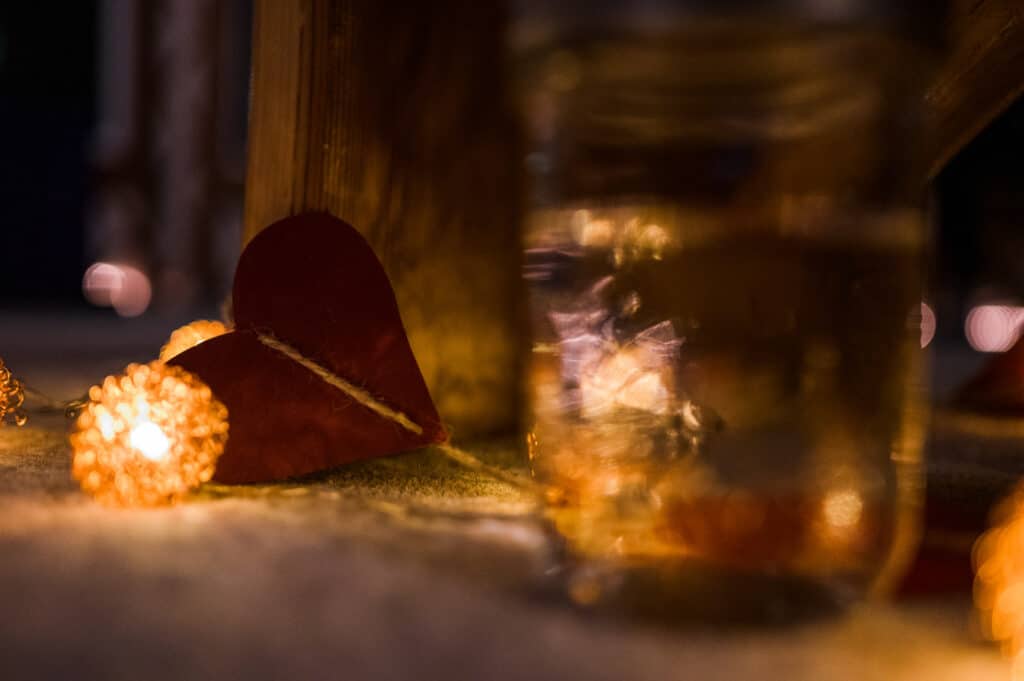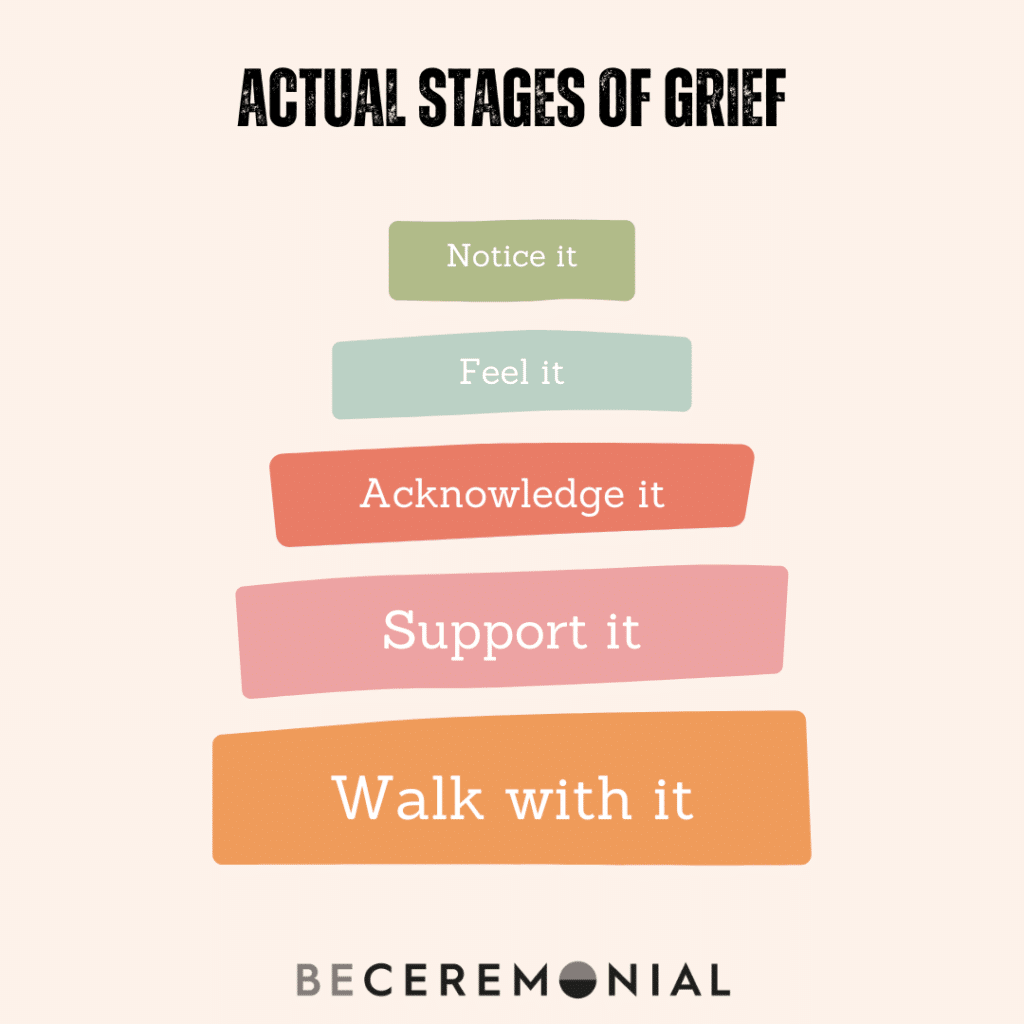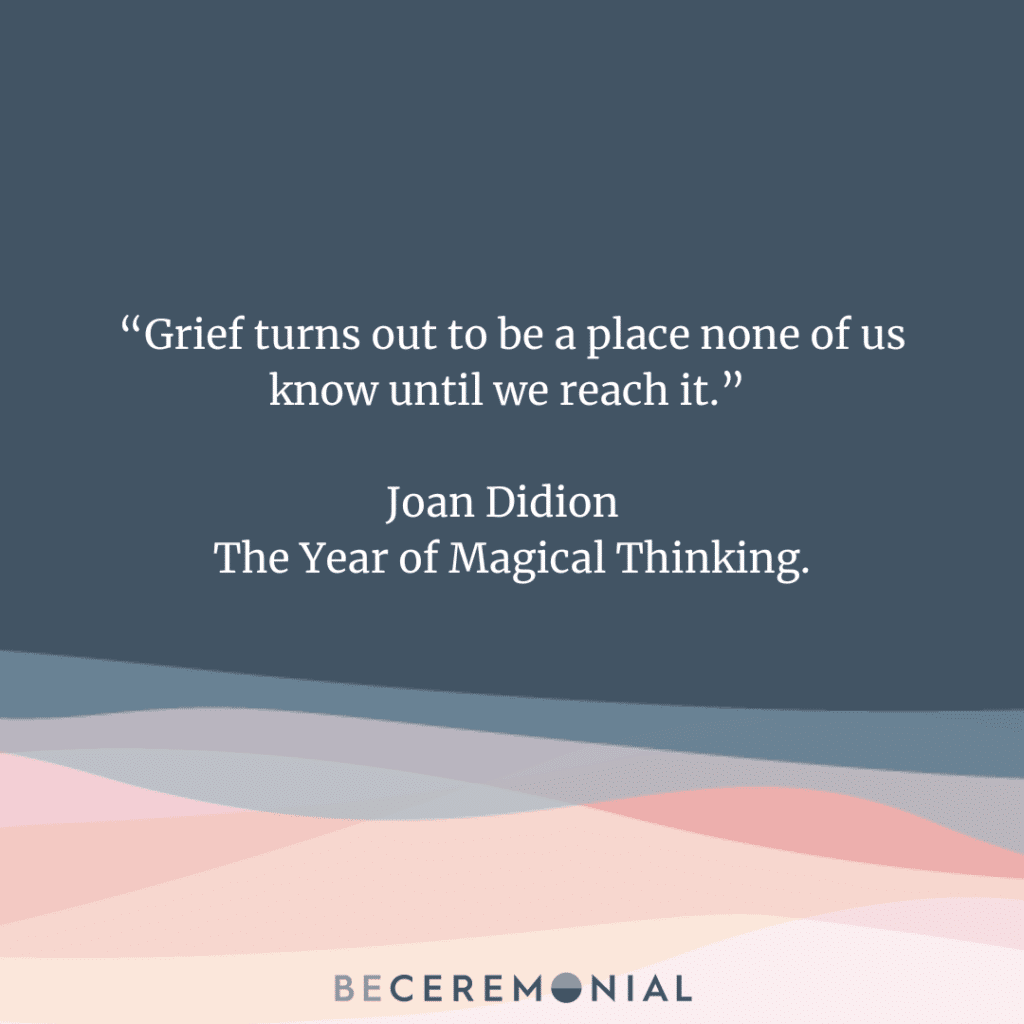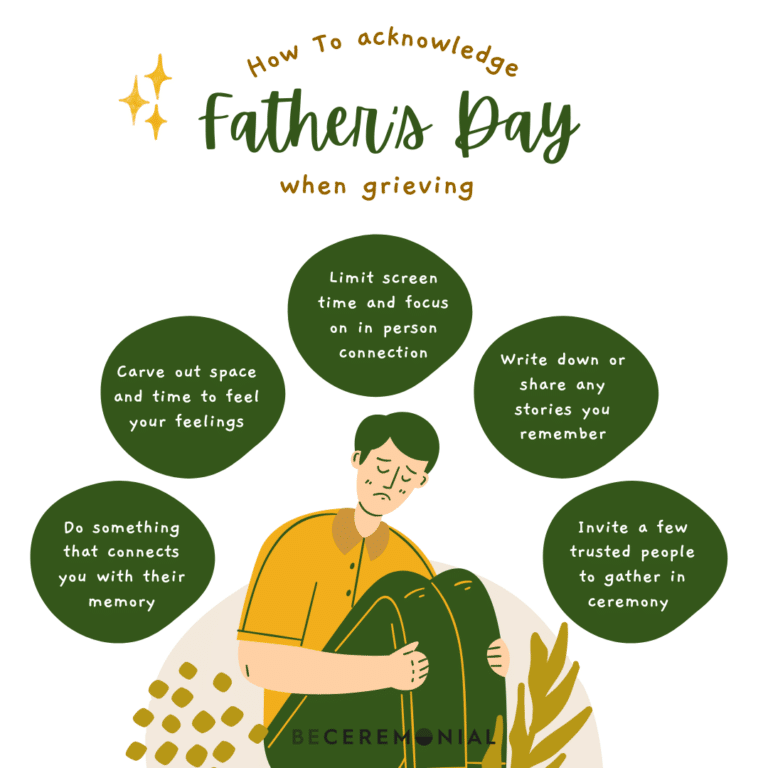What is the difference between grief and mourning, and what role can ritual play in acknowledging the way we grieve and the way we mourn?
Grief is what we feel. Mourning is what we do.

Loss is a universal thread woven into the tapestry of life. While inevitable, it doesn’t make it any easier to lose the things we love.
We often use the terms “grief” and “mourning” interchangeably, yet there’s a subtle yet important distinction between the two: Grief is what we feel inside, and mourning is how we express it.
Grieving and mourning are both natural responses to death. While many people use them interchangeably, grieving and mourning play different roles in our lives and it’s important to create space, and rituals, for both.
Grief: An Emotional Response
Grief is the emotional response to loss. It’s typically an internal experience, meaning it’s what we hold or carry inside ourselves. It’s often a private world of feelings that arise after a loved one dies, a dream shatters, a relationship ends, or a significant change occurs.
This emotional landscape can encompass a wide range of experiences, from sadness and anger to loneliness and disbelief. David Kessler, a renowned grief therapist, defines grief as “the emotional response to loss.”
Our grief rituals can often reflect this internalization. We have six powerful grief rituals in our App to inspire you, and countless others to express the many different moods and needs we face in everyday life.
Mourning: An Act of Expression
Mourning is how we express our grief. It’s typically an outward response focused on actions and displays of that grief.
Judith Herman, another leading expert in trauma and grief, describes mourning as “the outward expression of grief.” It’s the process of acknowledging the loss and navigating the practicalities of life without the person, place or thing there any longer.
Mourning rituals can be personal or cultural, encompassing traditions like funerals, memorial services, writing letters to the deceased, or creating a memory box. We have many Grief & Legacy ceremonies in our app, including how to create a Celebration of Life, perform an Ash Scattering, and honour a Death Anniversary.
Debunking the Five Stages of Grief

One of the biggest myths we’ve been told about grief is that it follows five neat and tidy stages, with the ultimate goal being closure. Many of us have been taught that grief is something we move through and that it will eventually end.
The “five stages of grief” model, popularized by Elisabeth Kübler-Ross, has been widely criticized for being too linear and prescriptive. Grief doesn’t follow a neat sequence; it’s a more fluid and unpredictable process.
The Many Forms of Grief
Grief isn’t limited to death. It can manifest after any significant loss, including:
- Relationship breakdown
- Job loss
- Miscarriage or infertility
- Pet loss
- Moving away from loved ones
- A terminal illness diagnosis
Grief is not something to be “overcome” or “cured.” It’s a lifelong companion that ebbs and flows. There will be good days and bad days, moments of sharp pain and times of acceptance. By acknowledging our grief and allowing ourselves to mourn openly, through ritual and support, we can learn to walk alongside it, finding new ways to carry the love we have lost within our hearts.
The Power of Ritual
Rituals can be powerful tools for acknowledging and honoring our grief. They provide a container for our emotions, a space to express our pain and connect with others who are experiencing similar losses.
Whether it’s a traditional funeral or a personal ceremony like planting a tree, rituals can help us move through the initial shock and begin the long journey of integrating loss into our lives.
Finding space to express our grief is often something we struggle with because we often equate grieving with mourning.

There are so many ways to grieve and mourn, and personalized rituals and community ceremonies can offer us a container to acknowledge our grief privately and publicly.
The way we mourn differs across the world. Many of us have some version of grief mourning rituals embedded into our way of life, meaning we do specific things to support those who are grieving, such as having a funeral or organizing a celebration of life.
Yet, for those of us without strong religious or cultural ties, it can feel overwhelming or performative to adapt rituals that we don’t have a strong connection with. Sometimes, we just need to know where to start.
Be Ceremonial opens the door to understanding how you can acknowledge your experiences with ritual and ceremony. Sign up for free to start exploring and deepening your relationship with ritual.




